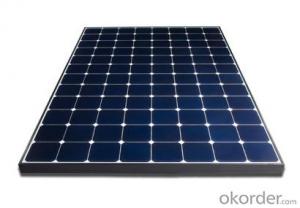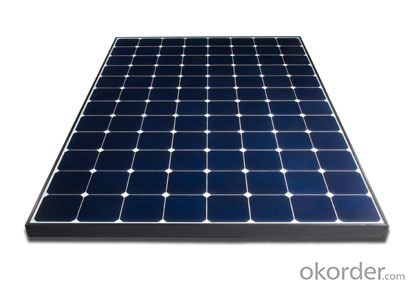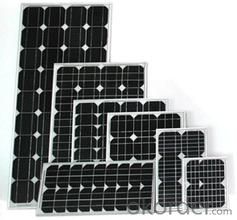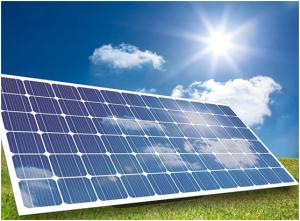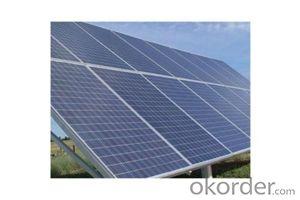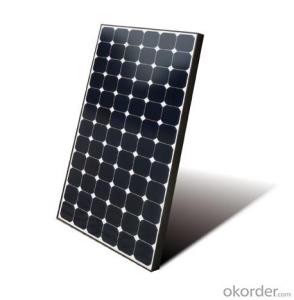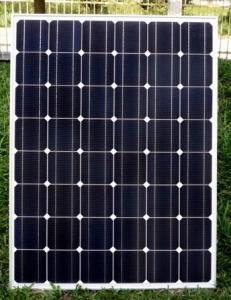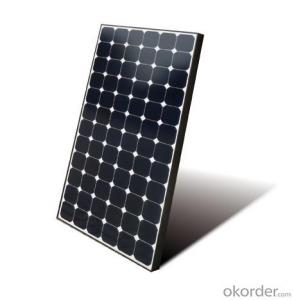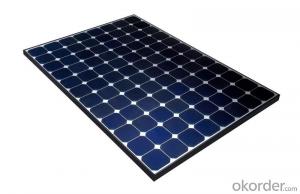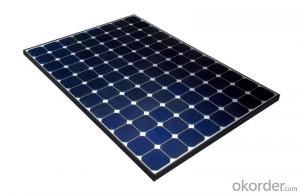Goodleap Solar Panels - CNBM Poly 170W Solar Panel with TUV UL CE Certificate for Residential
- Loading Port:
- Shanghai
- Payment Terms:
- TT OR LC
- Min Order Qty:
- 100 watt
- Supply Capability:
- 1000 watt/month
OKorder Service Pledge
OKorder Financial Service
You Might Also Like
Specification
CNBM Poly 170W Solar Panel with TUV UL CE Certificate For Residential
Introduction
Each module is rated by its DC output power under standard test conditions, and typically ranges from 100 to 365 watts. The efficiency of a module determines the area of a module given the same rated output – an 8% efficient 230 watt module will have twice the area of a 16% efficient 230 watt module. There are a few solar panels available that are exceeding 19% efficiency. A single solar module can produce only a limited amount of power; most installations contain multiple modules. A photovoltaic system typically includes a panel or an array of solar modules, a solar inverter, and sometimes a battery and/or solar tracker and interconnection wiring.
Solar modules use light energy (photons) from the sun to generate electricity through the photovoltaic effect. The majority of modules use wafer-based crystalline silicon cells or thin-film cells based on cadmium telluride or silicon. The structural (load carrying) member of a module can either be the top layer or the back layer. Cells must also be protected from mechanical damage and moisture. Most solar modules are rigid, but semi-flexible ones are available, based on thin-film cells.
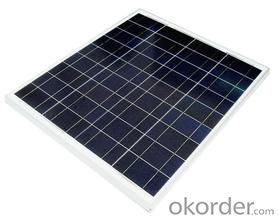
Suggested application
Home lighting business lighting,
Garden lighting, pavement lighting
Farmer household lighting
Decorative water pump
Traffic signal lighting
Industry area
Business area
Solar Power Plant
Product feature
Modules are made of Monocrystalline or Polycrystalline Silicon cell.
Materials and color of the solar panel frame: Clear anodized aluminum alloy type 6063T5 Universal frame; Silver-white color;
The output connection gathers the coupling: Selects conforms to the IEC-612615; 2005, class II, IEC61730 international standard; Airtight waterproofing binding clamp;
Module seal structure: The surface is thick, the high diaphanous rate armored glass with solar cell board special-purpose 3.2mm becomes after the high temperature lamination craft. The back selects has waterproof and anti- aged performance fine TPT materials. The entire block battery board has, the waterproofing, the anti- aging airtight and so on the fine performance;
Power tolerance: +/-3%
Packaging
International standard cartons (according to the requirements of customers)
- Q: What maintenance is required for solar panels?
- Solar panels require minimal maintenance. Regular cleaning of the panels to remove dirt, dust, and debris is recommended to ensure optimal efficiency. Additionally, inspecting the panels for any damage or signs of wear and tear is important. It is also advisable to monitor the performance of the solar system regularly. Overall, solar panels are known for their durability and reliability, requiring little ongoing maintenance.
- Q: Which is more efficient at producing energy? Reference(s) would be nice, but not required.
- Depends on the planet and solar panel. Generally, solar panels are more efficient according to these figures I bumped into. Photosynthetic efficiencies range from 0.% - 8%!
- Q: I have seen DIY software which explains everything for novices. Specifically, how to build your own solar panels and tie them into your home electrical system for about $00 in parts.Has anyone tried doing this? Was it easy?
- Hi Mitch, Yes they are legitimate ans so much so the government will actually help you pay for them. Someone has already mentioned if you purchase them from your local solar panel installer they will not be cheap.They have come down in price a lot over the last couple of years. Yes you can build your own and no its not too difficult.You need to know in your own mind whether you just want to reduce your utility bill or come off the grid completly. The best solution is a combination of wind and solar power and yes you can build your own windmill as well and at the bottom her I will show you where to go to get easy non technical plans. Naturally the sun does not shine at night so your solar panels would not work then but windmills function 24/7 as long as there is wind. If you have nearby neigbours please be aware windmills do make some noise which might upset your neighbours and of course see if you need planning permission from the town. The solar panel plans show you how to set an 80w solar panel which of course would not be able to power your whole house,but once you have built one why not build loads more and each one will get easier to build. Wish you all the best.
- Q: Can solar panels be used in disaster relief efforts?
- Yes, solar panels can be used in disaster relief efforts. Solar panels provide a reliable and sustainable source of electricity, which is crucial during times of disaster when traditional power grids may be disrupted. They can be used to power essential equipment, lighting, and communication systems in disaster-stricken areas, enabling emergency response efforts, medical services, and providing support to affected communities. Additionally, solar panels can be easily transported and set up in temporary shelters or mobile units, making them an efficient and versatile solution for disaster relief operations.
- Q: Can solar panels be used in areas with high levels of volcanic activity?
- Yes, solar panels can be used in areas with high levels of volcanic activity. While volcanic activity may pose certain challenges such as ash emissions or occasional cloud cover, solar panels can still generate electricity during periods of low activity. Additionally, solar panels can be designed and installed to withstand harsh environmental conditions, including volcanic ash deposition, ensuring their long-term functionality.
- Q: Can solar panels be installed in areas prone to hurricanes or tornadoes?
- Yes, solar panels can be installed in areas prone to hurricanes or tornadoes, but they need to be designed and installed with these extreme weather conditions in mind. Properly engineered solar panel systems can withstand high winds and severe weather events, but additional precautions may be necessary, such as reinforced mounting systems, impact-resistant glass, and regular maintenance to ensure their durability and functionality.
- Q: Heard you can put solar panels on laptops Anyone know if it can work on a Dell mini 0v? I've seen he USB slot solar pana but can someone tell me where to gt these?
- If okorder /
- Q: For part of a school project how would I charge a car battery with a solar panel? The panel is 48V and 6A. This needs to be low budget so I can't buy an expensive controller, Is that the only way or are there other ways of doing it?
- I okorder /... typical use page 8. These chips and the supporting capacitors should only cost a few ? (or $) but you will need to make a circuit board.
- Q: How much Electricity does a standard Solar panel producein terms of Watts and in terms of Units( i.e. electricity meter attached in our House)If I have 20 Solar panels and an inverter , how much electricity will I Be able to harness and store (state that in terms of volts)Can I run Arefridgerator, Iron, Heaters, Plasma T.V. and other high Electricity Consuming Devices.
- Take a look on OKorder at some of the books on how to design solar energy systems. It is a bit more complicated than you might expect. I'm not sure what you consider to be a standard solar panel, but the 3' ones I have produce about 5 watts of power in full sunlight. Put simply, you need to convert the power from the solar cells (variable voltage) into a constant voltage usable for charging a batteries. Most of the low cost modules for this purpose can't handle more than about 00 watts. Larger systems are available that handle thousands of watts but they are quite pricey. Since you can't take out more than you put into your battery system, you can calculate about how long you can run a high-current appliance based upon its wattage rating, that of the battery system (adjusted for loss of converting to AC), and the charging system.
Send your message to us
Goodleap Solar Panels - CNBM Poly 170W Solar Panel with TUV UL CE Certificate for Residential
- Loading Port:
- Shanghai
- Payment Terms:
- TT OR LC
- Min Order Qty:
- 100 watt
- Supply Capability:
- 1000 watt/month
OKorder Service Pledge
OKorder Financial Service
Similar products
Hot products
Hot Searches
Related keywords
